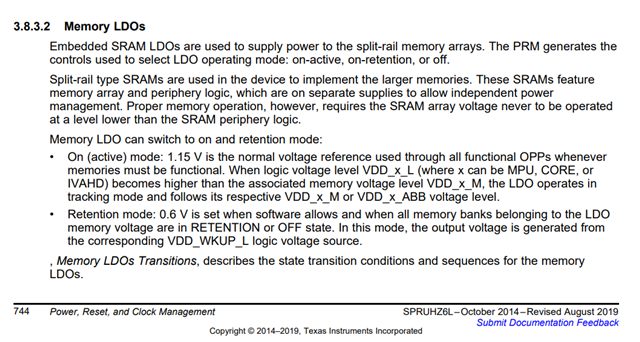Other Parts Discussed in Thread: TMDSEVM437X
Hi Support Team,
Our customer, who uses AM4376, has a question about register settings.
Question 1
There is an expression "SRAMNWA" for the following register listed in TRM (www.ti.com/.../spruhl7i.pdf).
What does "SRAMNWA" mean?
PRCM_PRM_LDO_SRAM_CORE_SETUP
PRCM_PRM_LDO_SRAM_MPU_SETUP
Also, SRAMNWA supplied VDDS or VDDA can be selected by b[1] of PRCM_PRM_LDO_SRAM_CORE_SETUP register,
but what is the difference between VDDS and VDDAR?
Question 2
Regarding the PRCM_CM_WKUP_CLKDIV32K_CLKCTRL register
The optional functional clock can be enabled/disabled with b[8], but which function is affected by this register?
The register name is WKUP, but will it be a function setting related to Wake up?
I thought that CLKDIV32K might refer to CLK_32KHZ (32.768kHz) generated by the Peripheral PLL.
If this understanding is correct, though, CLK_32KHZ is routed to be used as the CLK for the Watchdog Timer (WDT),
In that case, is it necessary to enable the b[8] Optional functional clock in PRCM_CM_WKUP_CLKDIV32K_CLKCTRL?
Currently, the WDT seems to be working even with the b[8] Optional functional clock
in PRCM_CM_WKUP_CLKDIV32K_CLKCTRL set to disable.
Best Regards,
Kanae















